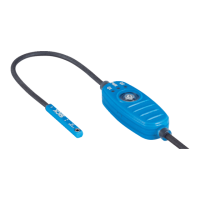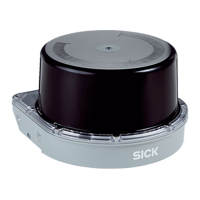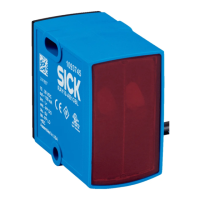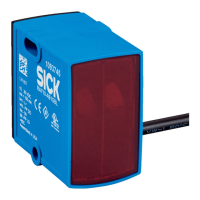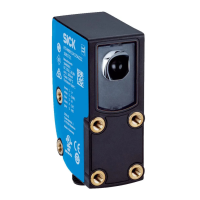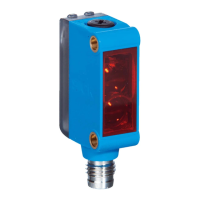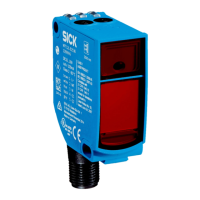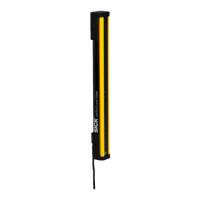°
Group 3: Cables which are a source of interference, such as control cables
for inductive loads, motor brakes
°
Group 4: Cables which are powerful sources of interference, such as out‐
put cables from frequency inverters, welding system power supplies, power
cables
b
Cables in groups 1, 2 and 3, 4 must be crossed at right angles, see figure 15.
b
Cables in groups 1, 2 and 3, 4 must be routed in different cable channels
or metallic separators must be used, see figure 16 and see figure 17. This
applies particularly where cables of devices with a high level of radiated
emission, such as frequency converters, are laid parallel to sensor cables.
Figure 15: Cross cables at right angles
Figure 16: Ideal laying – Place cables in different cable channels
Figure 17: Alternative laying – Separate cables with metallic separators
NOTE
Prevent equipotential bonding currents via the cable shield with a suitable earthing
method, see "Safety", page 22.
ELECTRICAL INSTALLATION 6
8028195/2022-11-30 | SICK O P E R A T I N G I N S T R U C T I O N S | MPS-G with 2/3 switching points and IO-Link (up to 8 switching points)
23
Subject to change without notice
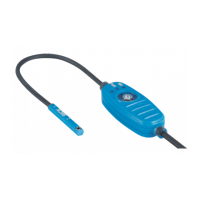
